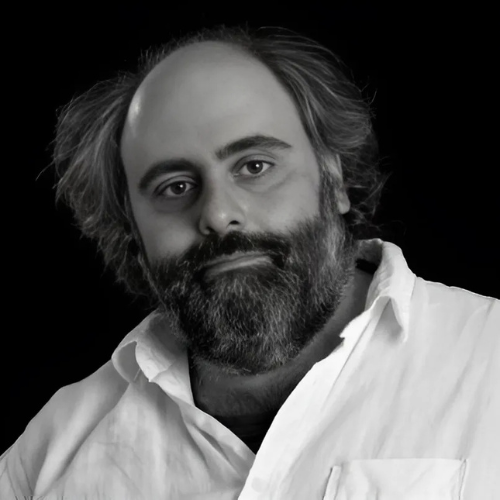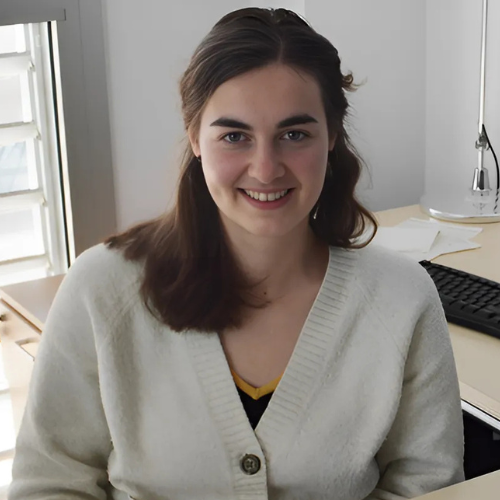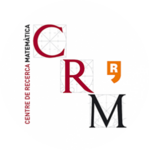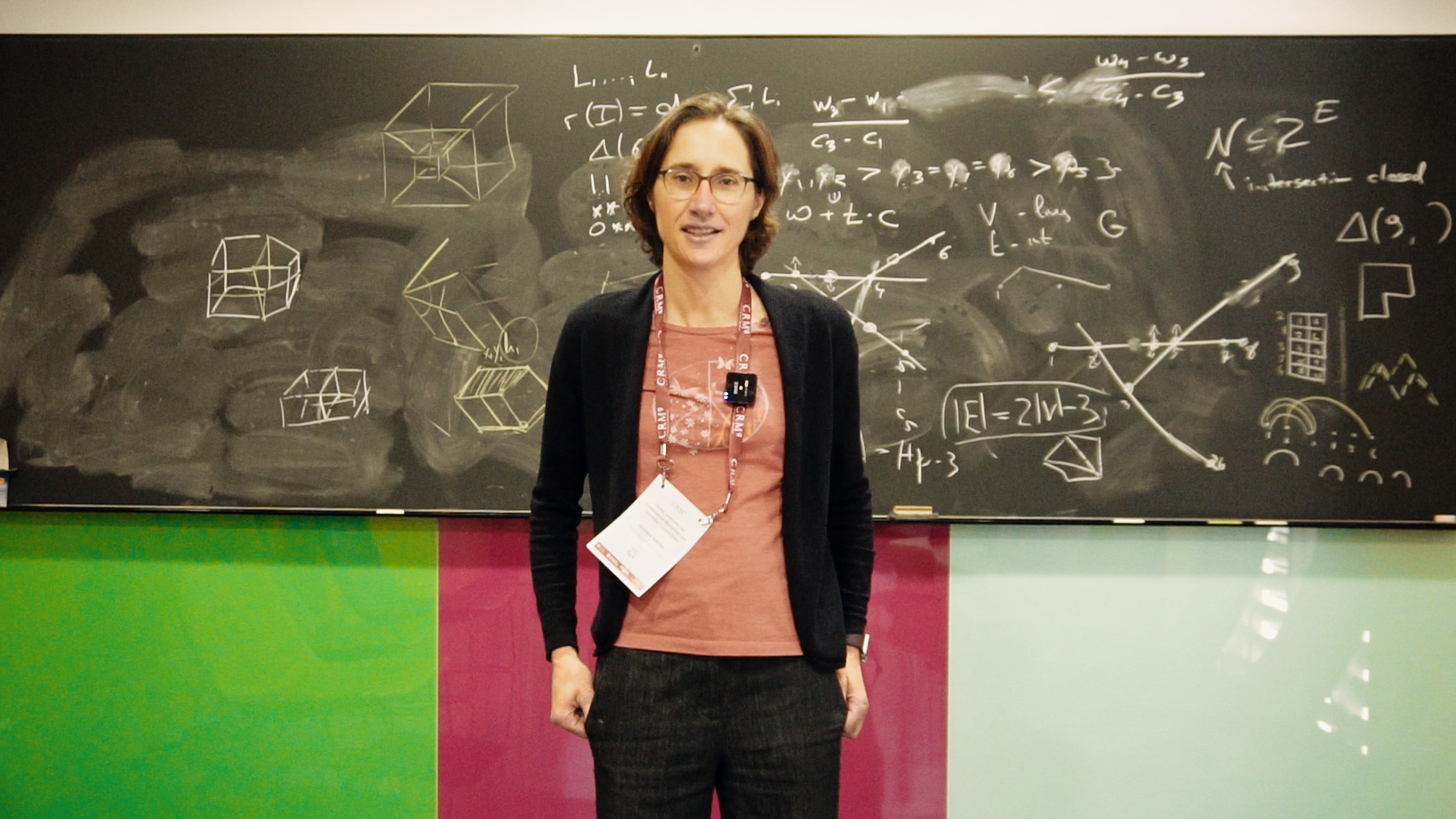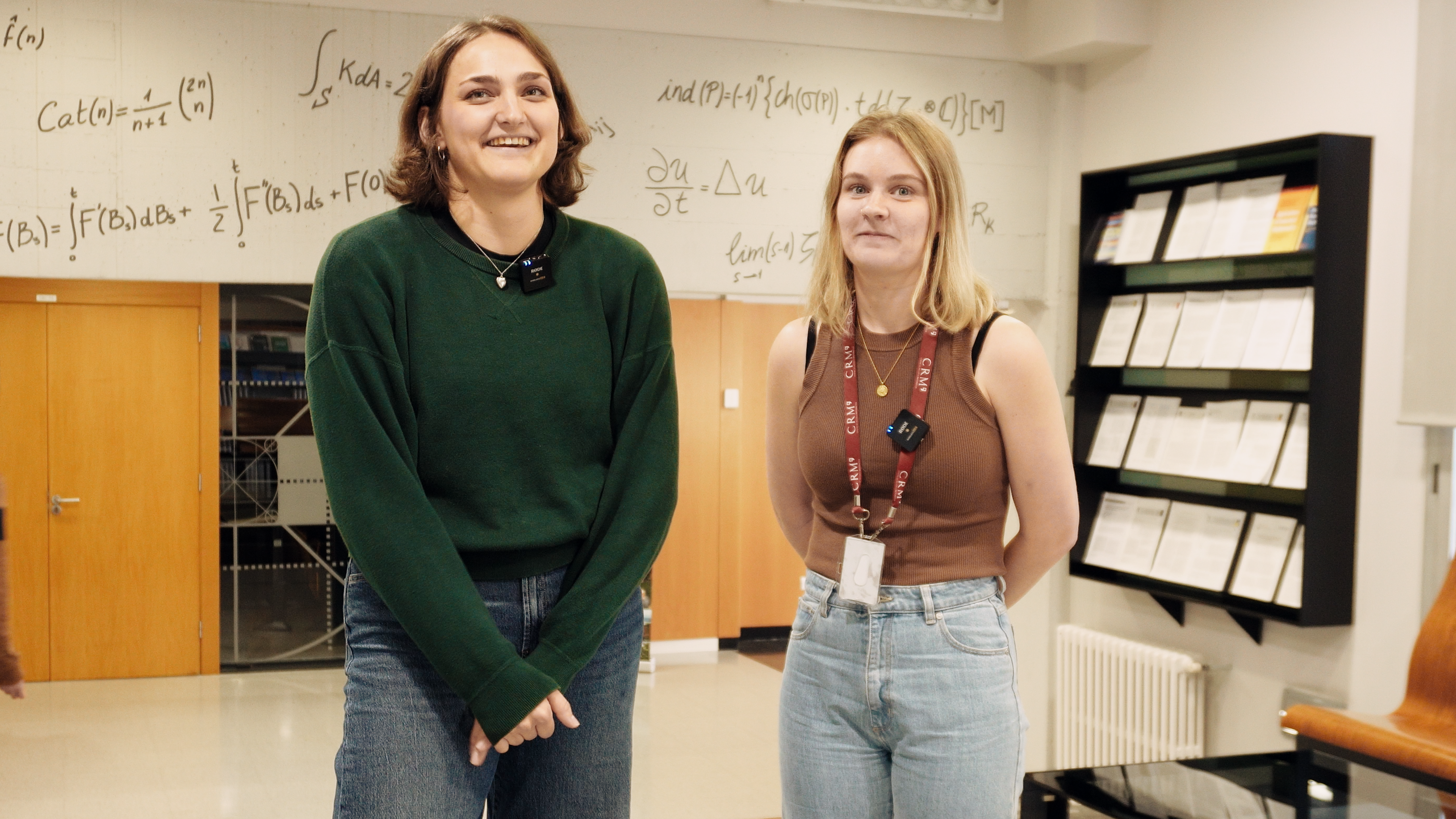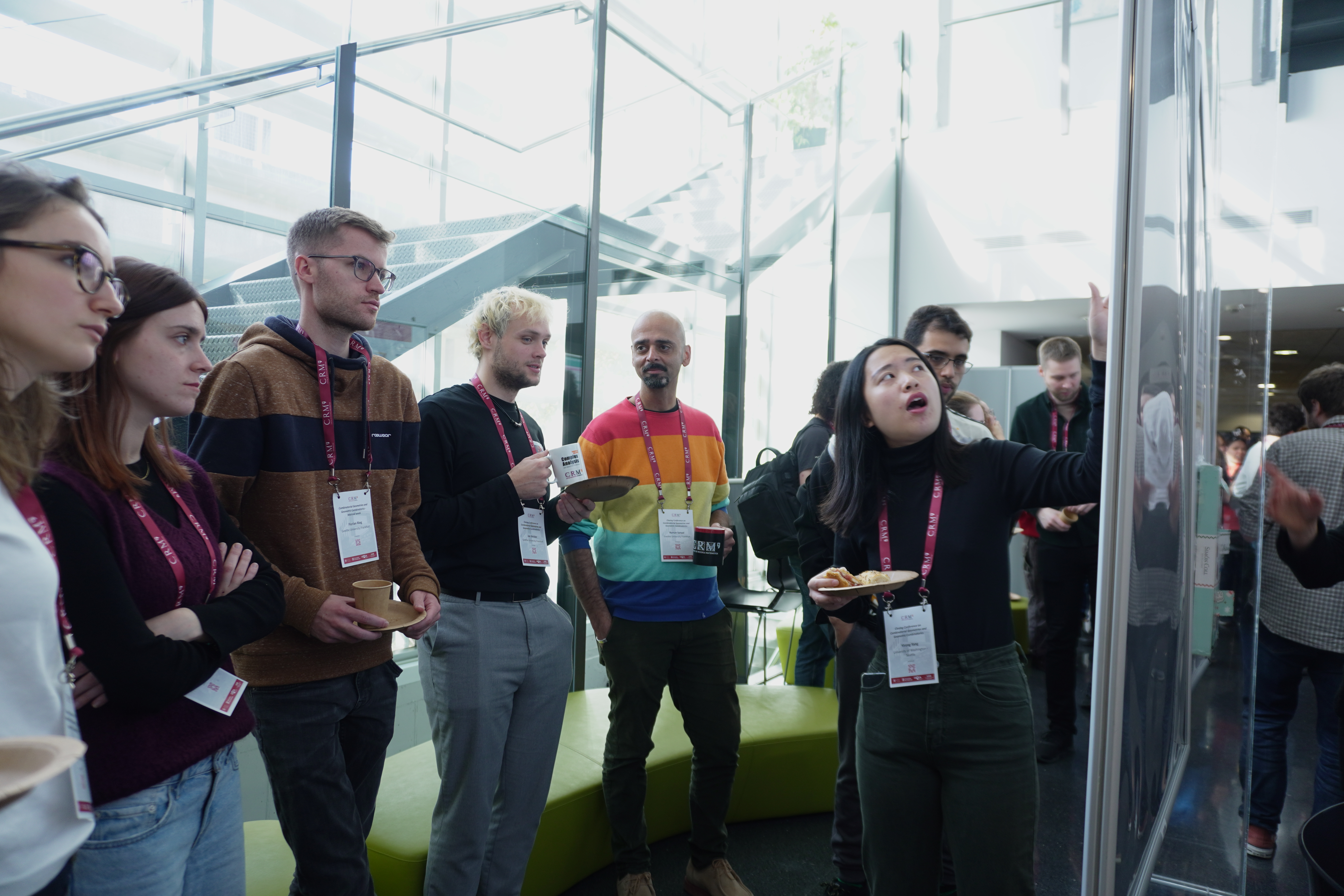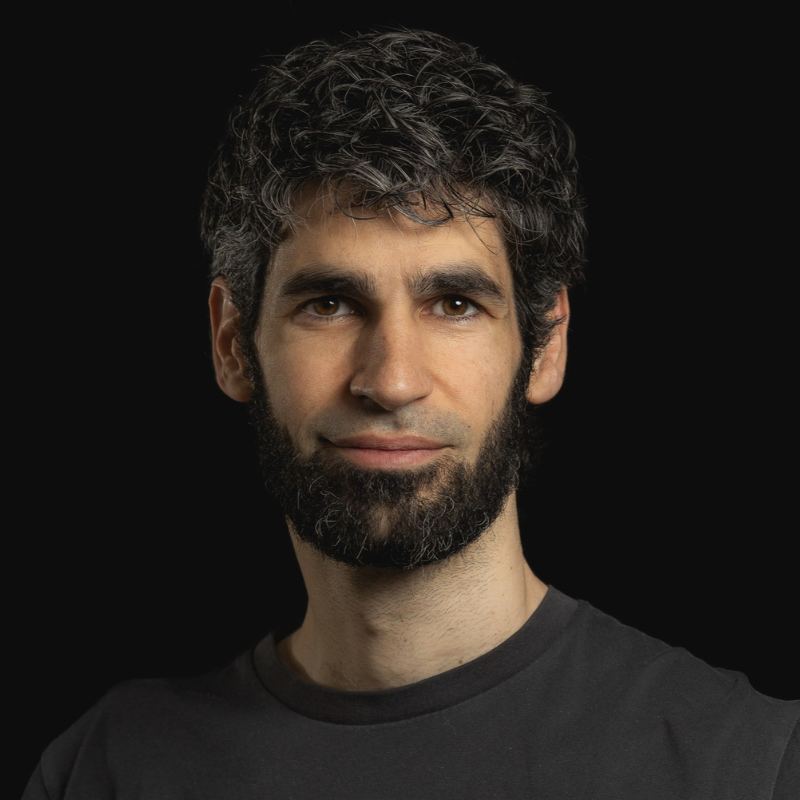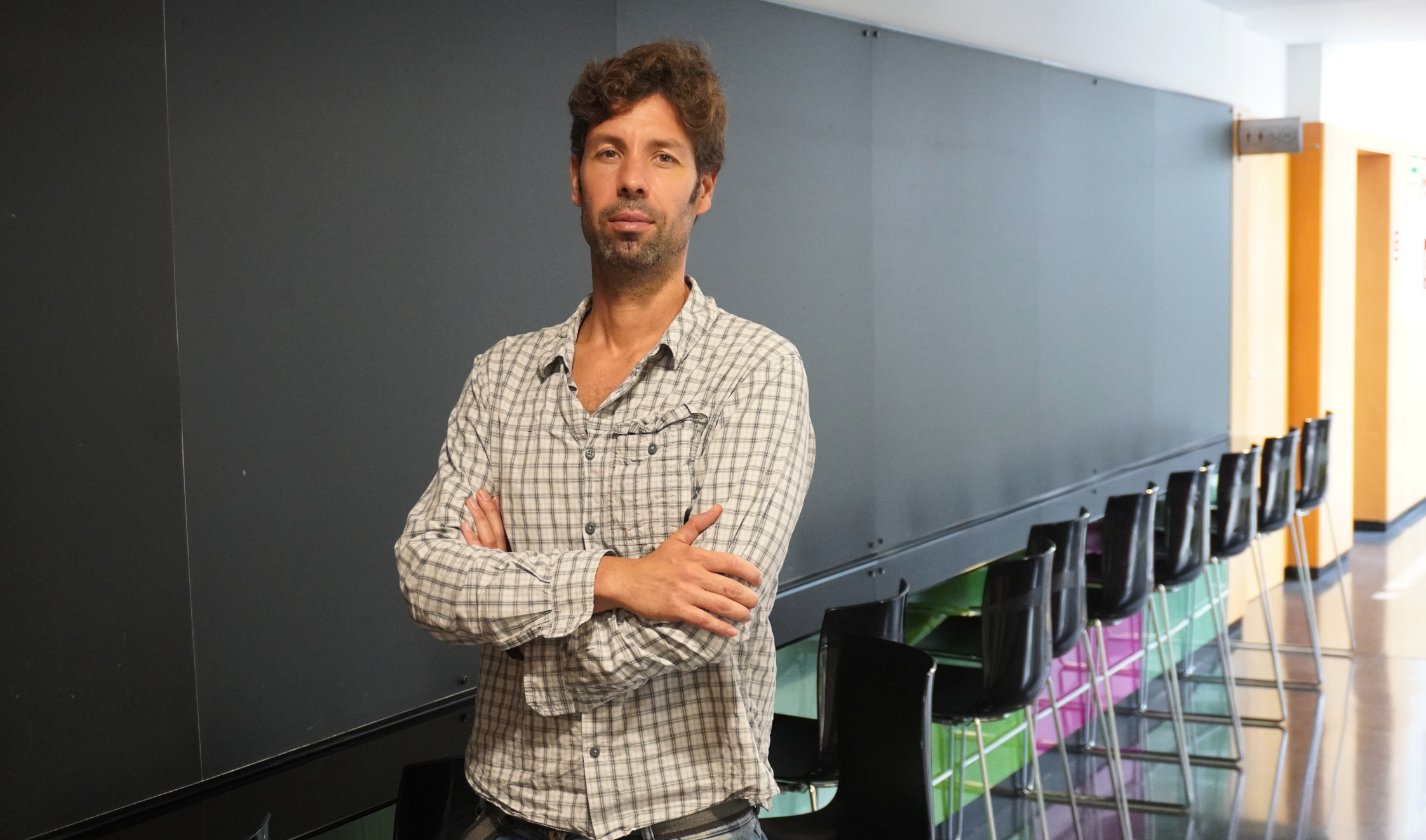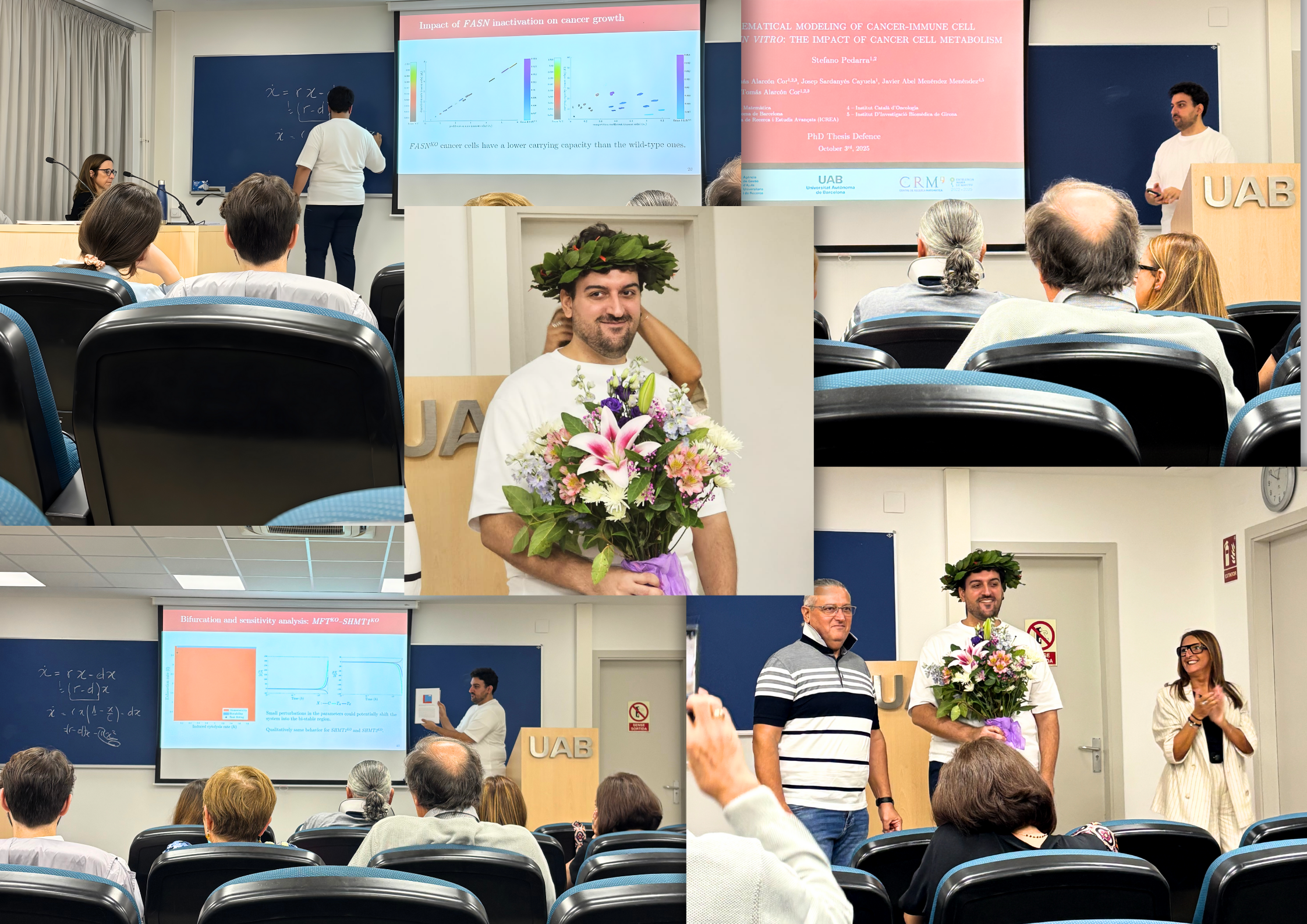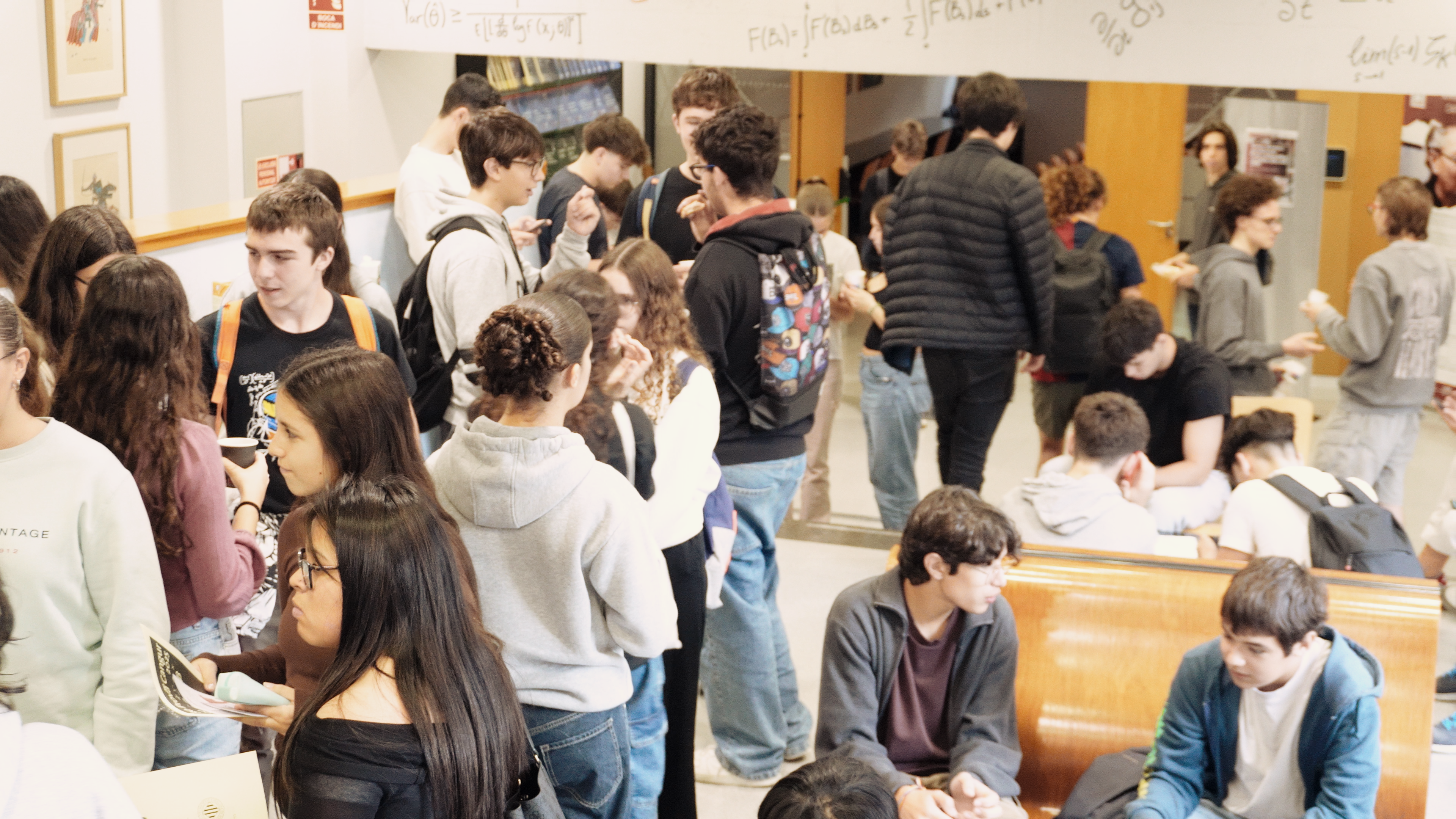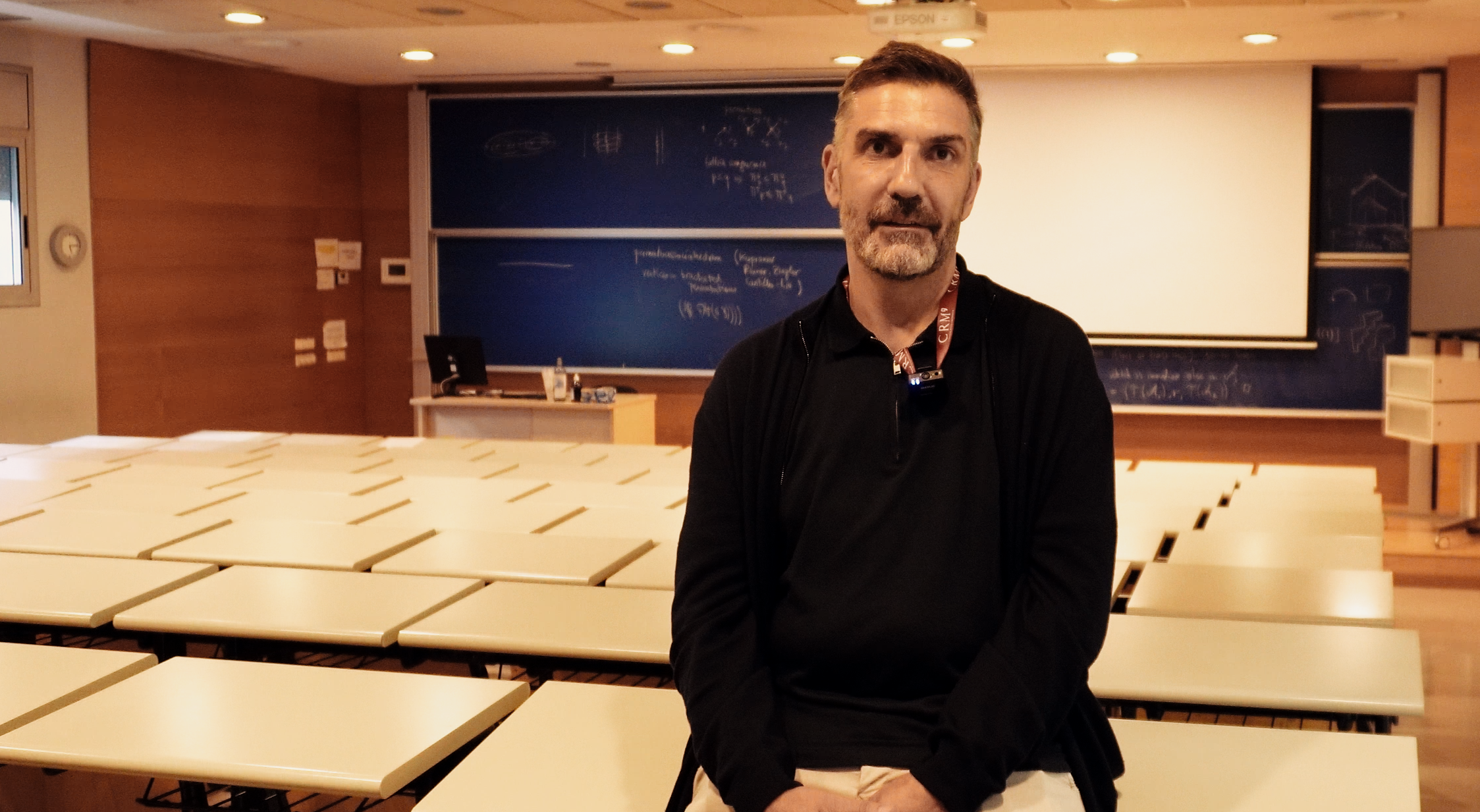Inside each one of your cells, there’s enough DNA to stretch more than two metres if laid out end-to-end. Yet somehow, all this DNA fits into a tiny structure called the cell nucleus, so intricately folded and tightly packed that it makes origami seem simple by comparison. But scientists are learning that this incredible folding isn’t just a clever trick to save space; it may also help cells make critical decisions about what kind of cells they become and how they behave.
A study published in the Bulletin of Mathematical Biology by researchers Daria Stepanova (CRM), Meritxell Brunet Guasch (University of Edinburgh), Helen M. Byrne (University of Oxford), and Tomás Alarcón (ICREA–CRM) explores how DNA’s 3D folding influences gene activity. They discovered that the shape of DNA, and how molecules interact with it, may be key to determining whether genes are switched “on” or “off.”
This switching of genes on and off without changing the DNA code is known as epigenetics. Epigenetic changes occur through chemical marks that attach to the DNA molecule or to proteins called histones, around which DNA wraps. Think of these marks as sticky notes placed along the DNA: they don’t change the instructions in our genetic code, but they tell cells which parts of those instructions to read or ignore. These notes are crucial for guiding a cell’s identity, allowing it to specialise into muscle, nerve, skin, or blood cells, even though every cell begins life with the same DNA.
However, a key mystery remains: sometimes these epigenetic marks form smooth patterns across the genome, while other times they become strikingly uneven or “rugged,” marked by abrupt shifts between areas where genes are active and areas where they’re silenced.
Until now, exactly how and why these complex, rugged patterns emerge has not been well understood.
A Virtual Lab Built with Mathematics
To solve this mystery, the research team created a mathematical model, a kind of “virtual lab,” that allows them to test biological rules and see what patterns emerge through computer simulations. Their model specifically explored the interactions between key histone modifications and the enzymes responsible for adding (“writing”) or removing (“erasing”) these chemical marks.
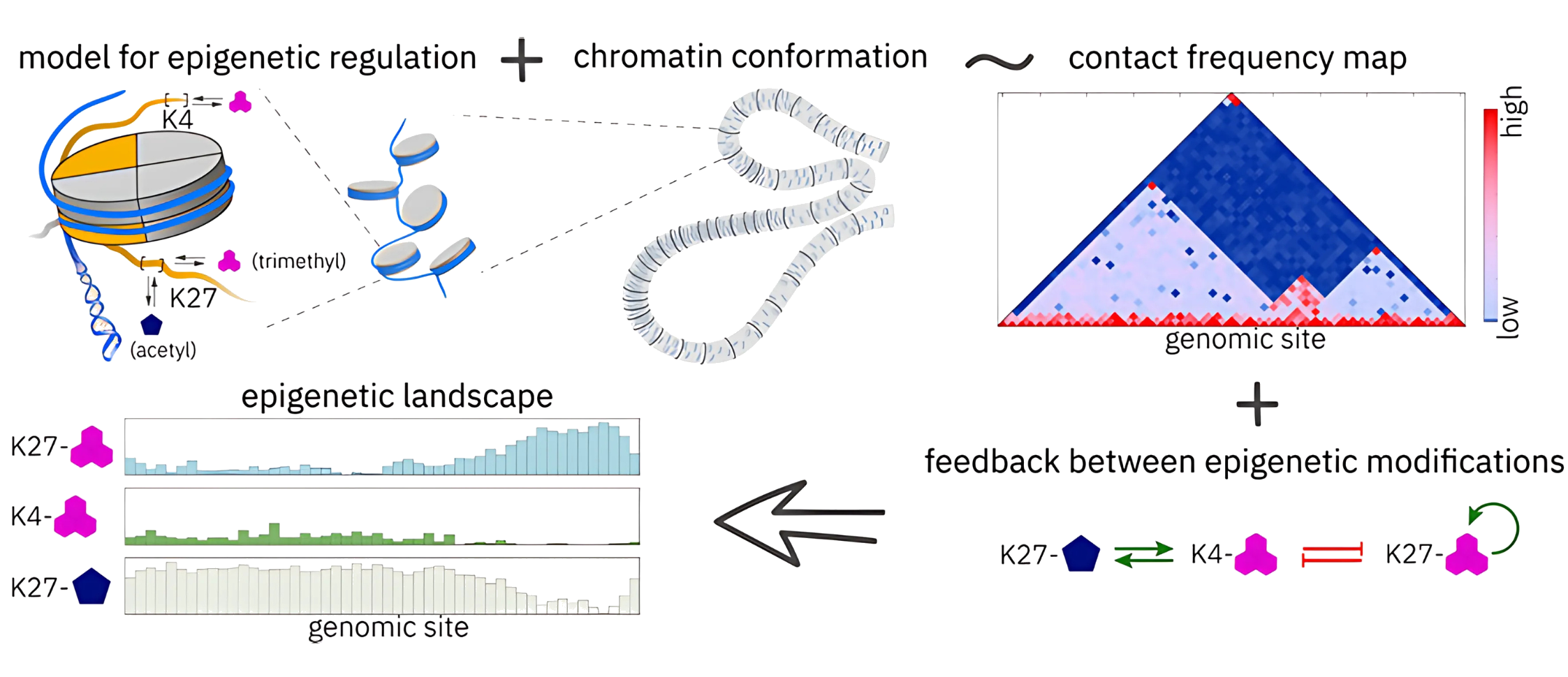
The model considers epigenetic modifications (H3K27me3, H3K4me3, H3K27ac) on histone H3 residues. It divides chromatin into fixed-size genomic regions characterised by these modifications, linked through reinforcing and inhibitory enzyme-driven feedback.
What set their approach apart was the inclusion of two critical elements usually overlooked in other studies. First, they included the actual 3D folding structure of chromatin (DNA wrapped around histones) because how chromatin folds changes which parts of the genome interact. Second, they factored in the limited availability and competition among enzymes. These enzymes constantly “fight” over which sites on the chromatin they modify, creating a microscopic molecular tug-of-war.
“There are not so many models of epigenetic regulation, especially those which also account for chromatin conformation; therefore, previous models have been formulated in a more simplified setting.” As Stepanova explains, “enzyme competition can be important in shaping epigenetic landscapes. It is a more realistic assumption than a constant or uniform concentration of enzyme along the chromatin. Chromatin is folded, and enzyme molecules are ‘floating’ around, ready to bind to any genomic site in their vicinity.” Moreover, she notes, this enzyme competition can “break the symmetry and eventually lead to the emergence of rugged epigenetic patterns.”
By combining chromatin folding and enzyme competition, the team found that remarkably uneven patterns emerged. When distant segments of DNA come into close contact due to folding, they influence each other’s epigenetic states. At the same time, because the enzymes needed to modify these regions are limited, only some areas get marked, leaving others untouched. The result is a patchwork, or rugged landscape, of active and inactive zones that mirrors what scientists see in real cells.
Stepanova further highlights why identifying these rugged and uniform regimes is crucial: “Epigenetic marks are known to have self-reinforcing feedback mechanisms, promoting the addition of the same or similar marks in neighbouring chromatin regions. If the region is extended, these loops would make the entire region uniform. This does not coincide with reality, since we know that, especially in differentiated cells, there are chromatin regions which are silenced and chromatin domains which are active.”
She notes that this raises an important question: “What is the ‘stopping factor’ that maintains the boundaries between these activating and inhibitory regions?” Their research provides “a possible explanation for one of the factors contributing to the emergence of alternating silenced and active genomic regions.”
Interestingly, the team’s model also captured another aspect observed in real cells called bivalent chromatin. These are regions carrying both activating and silencing epigenetic regulators at once, like genes being kept on standby, ready to quickly turn “on” or “off” in response to specific signals. These bivalent states help cells transition smoothly from uniform epigenetic landscapes to more rugged patterns, or vice versa.
Bridging Scales
The researchers designed their model to function effectively across different scales, from individual gene regions to larger chromatin structures known as Topologically Associating Domains (TADs). This mesoscale approach is particularly important. “Higher-order structures, such as loops and small TADs, can be visualised more precisely, and we can investigate how these structures influence the formation of epigenetic patterning,” Stepanova explains. “If we go to large scales of the entire chromosome, these details are also lost. In my view, the mesoscopic approach is ideal for exploring epigenetic landscapes.”
Stepanova also highlights the unique advantages mathematics offers in studying epigenetics. “Using mathematical modelling, we can investigate various aspects of biological processes which cannot be manipulated, visualised, isolated, measured, or controlled in an experimental setting,” she notes. While experimental studies are powerful, they can be costly and time-consuming. Theoretical modelling, she points out, is essentially cost-free, though closer collaboration with biologists is essential.
As an example of this type of collaboration, Stepanova mentions the current work of her master’s student Roger Bosch, who is investigating how various methods of processing chromatin conformation data affect our understanding of epigenetic patterns. These techniques aim to remove experimental artefacts and clarify the true chromatin folding patterns. However, Stepanova remarks, “It is still unclear how much these methods give us a prettier picture and how much they genuinely bring us closer to the accurate structure of cellular DNA.”
Questions like these underline both the importance and potential of integrating theoretical modelling closely with experimental research to improve our understanding of biological data.
Citation:
Stepanova, D., Brunet Guasch, M., Byrne, H.M. et al. Understanding How Chromatin Folding and Enzyme Competition Affect Rugged Epigenetic Landscapes. Bull Math Biol 87, 59 (2025). https://doi.org/10.1007/s11538-025-01434-0
crm researchers
Tomás Alarcón studied Physics, obtaining his PhD in 2000. He then pursued postdoctoral research at Oxford’s Centre for Mathematical Biology, collaborating with Helen Byrne and Philip Maini on mathematical models of tumour growth, a topic he continues researching today. After further postdoctoral positions at University College London and Imperial College, focusing on tumour dormancy, receptor dynamics, and epigenetic evolution, he led the Mathematical Biology group at the Basque Centre for Applied Mathematics (BCAM). Since 2010, he has headed the Computational & Mathematical Biology group at CRM.
Daria Stepanova is a researcher specialising in mathematical modelling applied to theoretical biology. She completed her PhD at the CRM (UAB) under the supervision of Tomás Alarcón (ICREA–CRM), Helen Byrne, and Philip Maini (University of Oxford), focusing on blood vessel growth (angiogenesis). After a research stay at Oxford studying cellular interactions linked to cancer, she joined the Laboratorio Subterráneo de Canfranc (LSC), providing mathematical support for experiments such as Hyper-Kamiokande and investigating how low-background radiation affects biological systems. Currently back at CRM as a postdoc, she continues exploring the complex interactions between epigenetic regulation and the 3D chromatin structure.
Subscribe for more CRM News
|
|
CRM CommPau Varela
|
From Barcelona to West Bengal: Chemistry Meets Mathematics to Enhance Water Filter Design
Researchers at the Centre de Recerca Matemàtica, in collaboration with IIT Kharagpur and UPC, have developed a mathematical model that accurately predicts the performance of fluoride-removal water filters made of mineral-rich carbon (MRC) and...
Polytopes, Matroids, and the Friends You Make: Martina Juhnke on Two Months at the CRM
The Centre de Recerca Matemàtica recently hosted a research programme on Combinatorial Geometries and Geometric Combinatorics, focusing on the overlap between polytopes and matroids. Martina Juhnke, a member of the scientific committee, reflects on how this programme...
BAMB! 2025: Participants Return to the CRM for Research Stays
In October 2025, the Centre de Recerca Matemàtica hosted Josefine Meyer (ISTA) and Cate MacColl (University of Queensland) for a month-long research stay following their participation in the BAMB! Summer School. Despite studying vastly different subjects, from...
Connecting Shapes, Patterns, and Ideas: the Closing Conference on Combinatorial Geometries and Geometric Combinatorics
During five days, the CRM hosted the Closing Conference of the MDM Focused Research Programme on Combinatorial Geometries & Geometric Combinatorics. The event featured plenary talks, contributed sessions, and posters on topics from matroids and polytopes to...
Xavier Ros-Oton among the 65 most cited mathematicians in the world
ICREA professor at the Universitat de Barcelona and CRM affiliated researcher Xavier Ros-Oton appears on Clarivate's Highly Cited Researchers 2025 list, which this year reinstates the mathematics category after two years of exclusion.Citations are a strange way to...
New Horizons for H- and Γ-convergence: From Local to Nonlocal (and viceversa)
The researchers Maicol Caponi, Alessandro Carbotti, and Alberto Maione extended the H- and Γ-convergence theories to the setting of nonlocal linear operators and their corresponding energies. The authors were able to overcome the limitations of classical localization...
Diego Vidaurre joins the CRM through the ATRAE talent programme
Diego Vidaurre has joined the Centre de Recerca Matemàtica through the ATRAE programme, bringing his expertise in modelling spontaneous brain activity across multiple data modalities. His work focuses on understanding how the brain’s intrinsic dynamics shape...
El CRM a la Setmana de la Ciència: una ruta entre dones, formes i pensament
El CRM va participar en la 30a edició de la Setmana de la Ciència amb una ruta guiada que va combinar les biografies de dones matemàtiques amb obres d'art del centre, connectant ciència, història i creació artística.El 12 de novembre, el Centre de Recerca Matemàtica...
Stefano Pedarra Defends his PhD Thesis on the Interaction between Tumour Cells and the Immune System
Stefano Pedarra has completed his PhD at the Centre de Recerca Matemàtica with a thesis exploring how tumour-cell metabolism shapes the immune system’s ability to fight cancer. His work brought mathematics and biology into direct conversation, from building models to...
Els estudiants participants a la prova de preselecció de Bojos per les Matemàtiques visiten el CRM
La prova de preselecció de Bojos per les Matemàtiques va reunir estudiants de tot Catalunya a la UAB i al CRM, amb presentacions a càrrec de Montse Alsina, presidenta de la Societat Catalana de Matemàtiques, Núria Fagella, degana de la Facultat de Matemàtiques i...
Jordi Mompart highlights the role of artificial intelligence in sport at the XIII GEFENOL-DIFENSC Summer School
The XIII GEFENOL-DIFENSC Summer School gathered over thirty researchers from across Europe to explore how statistical physics helps explain complex phenomena in biology, ecology, networks, and social systems. In his closing lecture, Jordi Mompart (UAB) examined how...
Critical Slowing Down in Genetic Systems: The Impact of Bifurcation Proximity and Noise
An international collaboration including researchers from the Centre de Recerca Matemàtica (CRM) has shown that when several bifurcations occur close to one another, their interaction can dramatically amplify critical slowing down effect - the progressive slowdown of...


